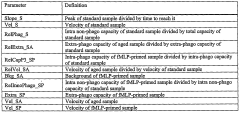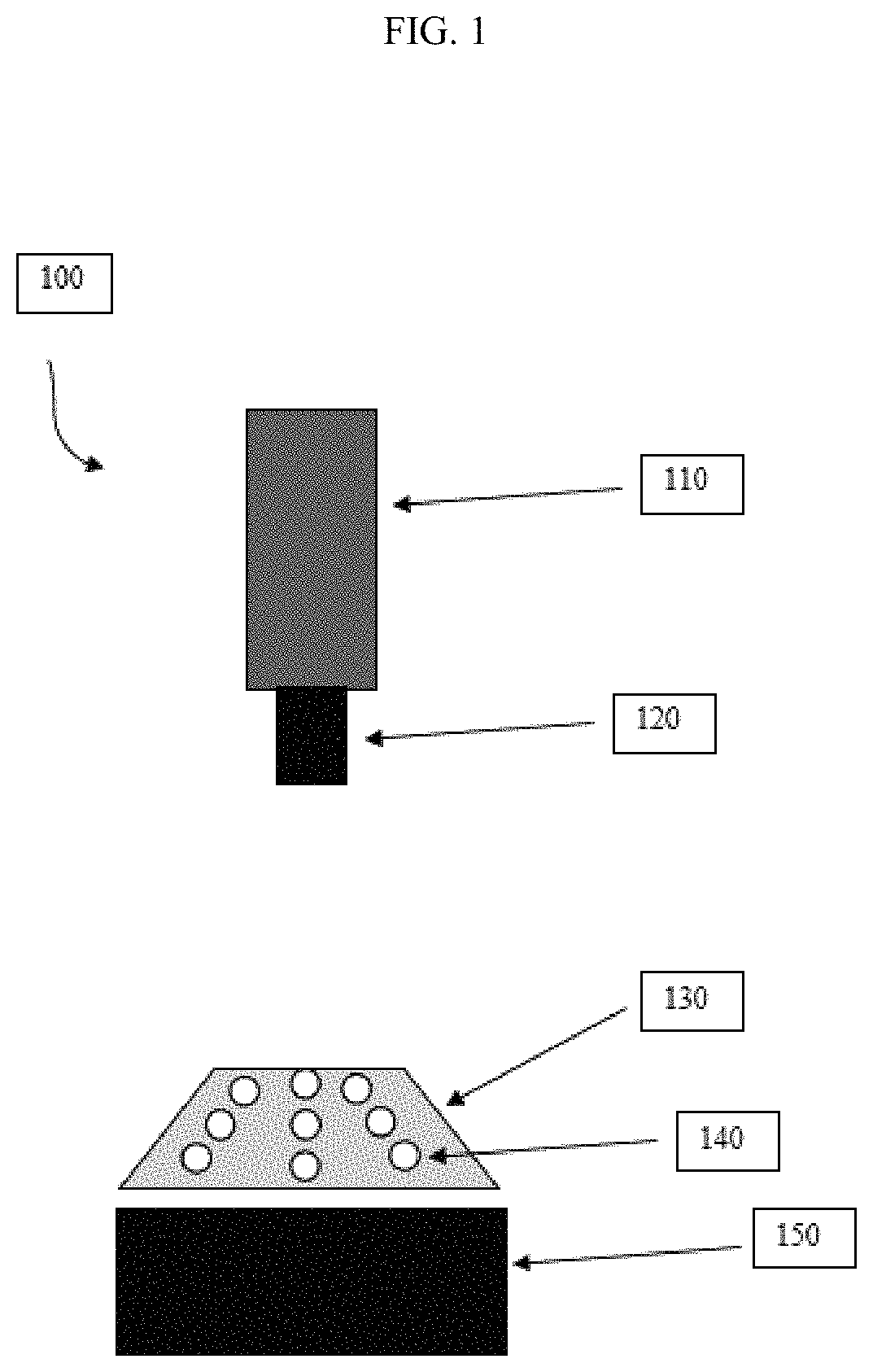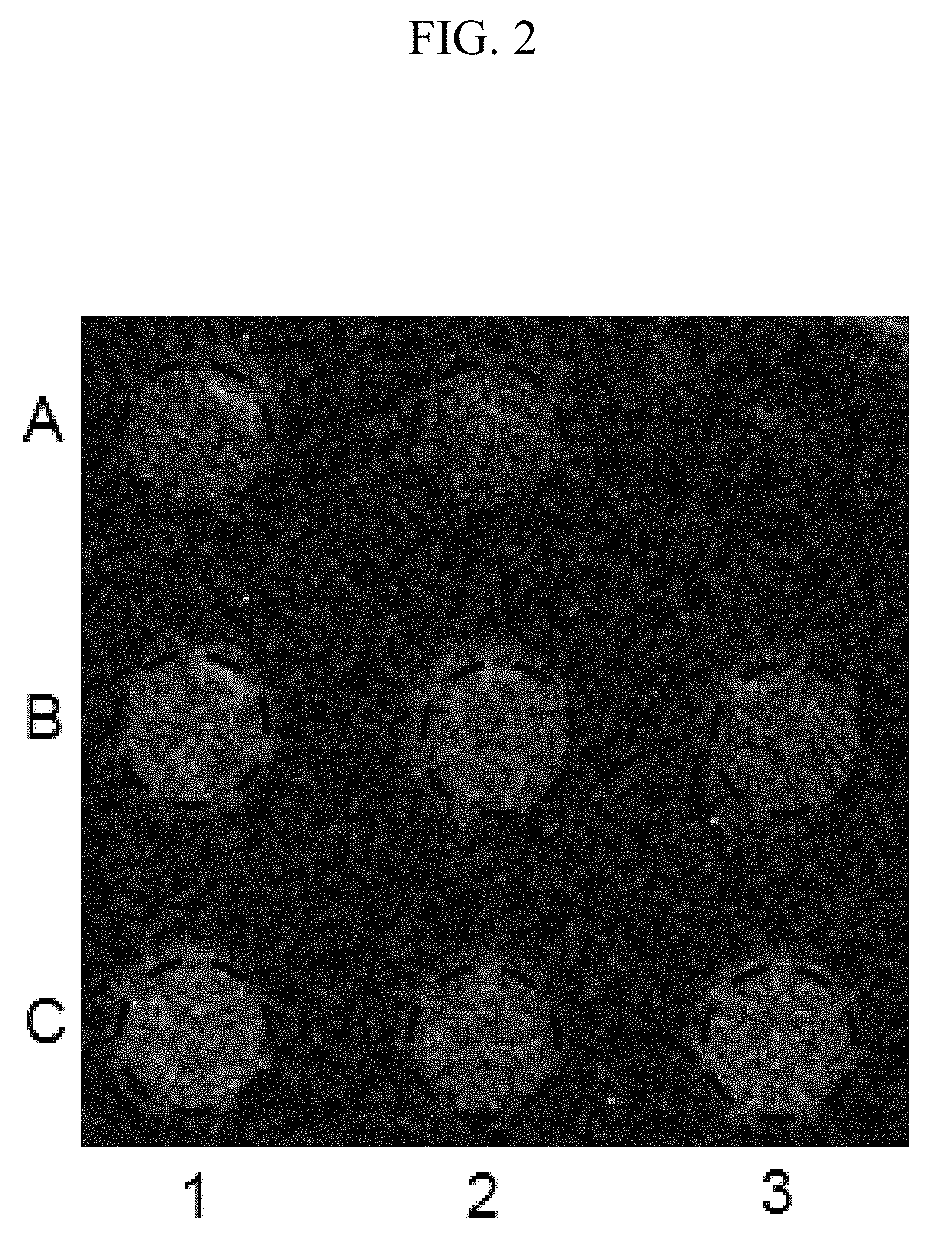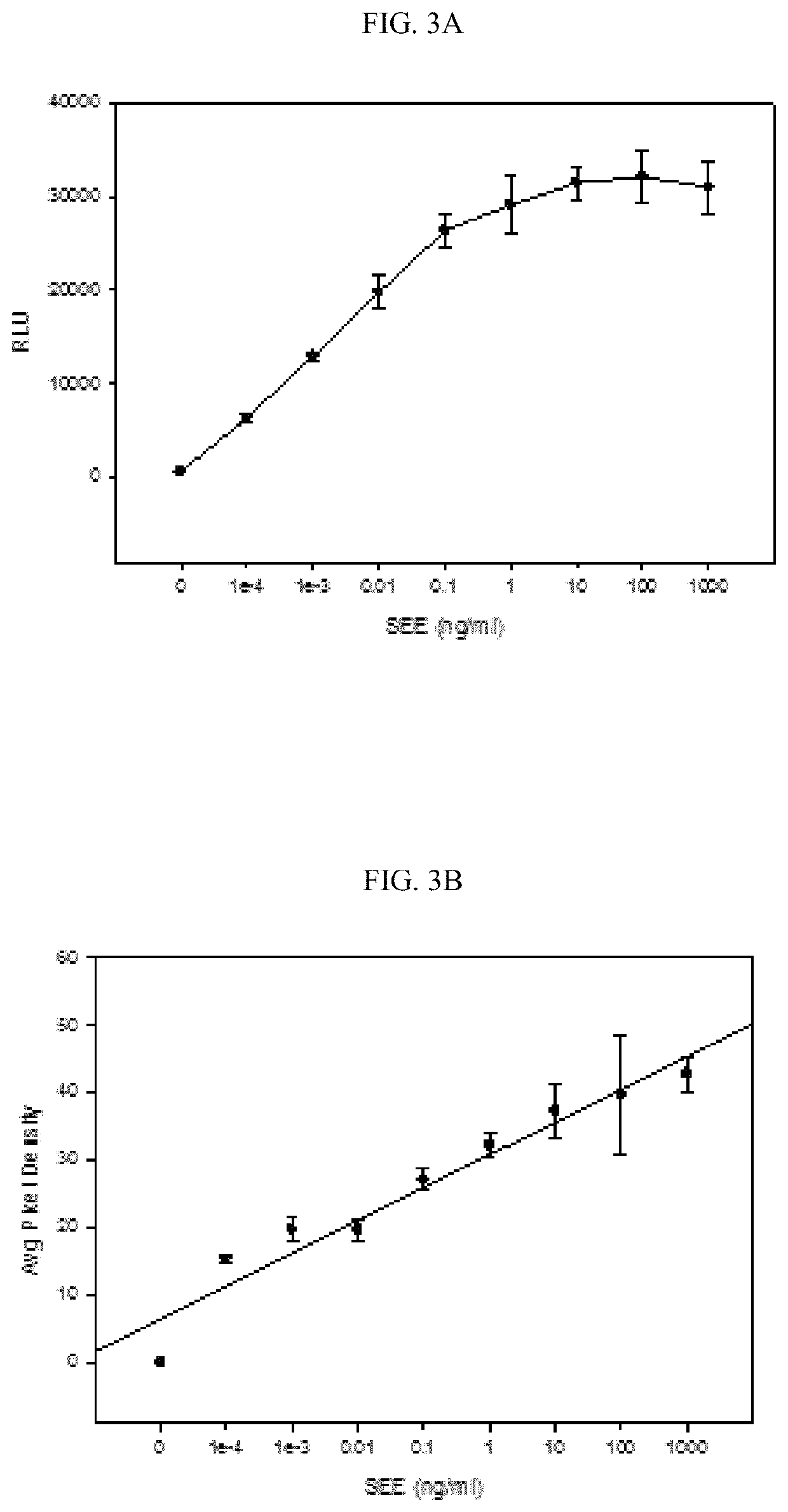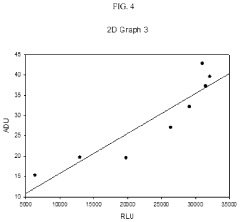How Luminol Improves Microbial Detection Systems?
AUG 19, 20259 MIN READ
Generate Your Research Report Instantly with AI Agent
Patsnap Eureka helps you evaluate technical feasibility & market potential.
Luminol in Microbial Detection: Background and Objectives
Luminol, a chemiluminescent compound, has emerged as a powerful tool in microbial detection systems, revolutionizing the field of microbiological analysis. The journey of luminol in this domain began in the early 20th century when its light-emitting properties were first discovered. Since then, researchers have been exploring its potential applications in various fields, including forensic science and, more recently, microbial detection.
The evolution of luminol-based microbial detection systems has been driven by the increasing demand for rapid, sensitive, and cost-effective methods to identify and quantify microorganisms in diverse environments. Traditional microbial detection methods, such as culture-based techniques, often require extended incubation periods and may not capture the full spectrum of microbial diversity. This limitation has spurred the development of alternative approaches, with luminol-based systems emerging as a promising solution.
The primary objective of incorporating luminol into microbial detection systems is to enhance sensitivity, speed, and accuracy in identifying and quantifying microorganisms. Luminol's chemiluminescent properties allow for the detection of extremely low concentrations of microbes, making it particularly valuable in fields such as food safety, water quality monitoring, and clinical diagnostics. By leveraging luminol's ability to produce light when oxidized, researchers aim to create detection systems that can rapidly signal the presence of microorganisms, even in complex matrices.
Another key goal in the development of luminol-based microbial detection systems is to improve the specificity of detection. While luminol itself is not specific to particular microorganisms, its integration with other biochemical components and detection technologies has opened up possibilities for more targeted microbial identification. This has led to ongoing research into combining luminol with specific enzymes, antibodies, or other biomarkers to create highly selective detection systems.
The technological trajectory of luminol in microbial detection is closely aligned with broader trends in biotechnology and analytical chemistry. Advancements in nanotechnology, microfluidics, and biosensor design have significantly influenced the evolution of luminol-based detection systems. These interdisciplinary approaches have enabled the development of more sophisticated, miniaturized, and user-friendly detection platforms that harness the power of luminol's chemiluminescence.
As research in this field progresses, the overarching aim is to develop luminol-based microbial detection systems that are not only highly sensitive and specific but also robust, portable, and suitable for on-site testing. This aligns with the growing need for rapid diagnostic tools in various sectors, from healthcare to environmental monitoring. The ultimate vision is to create detection systems that can provide real-time, accurate microbial analysis in diverse settings, potentially transforming how we approach microbial detection and management across multiple industries.
The evolution of luminol-based microbial detection systems has been driven by the increasing demand for rapid, sensitive, and cost-effective methods to identify and quantify microorganisms in diverse environments. Traditional microbial detection methods, such as culture-based techniques, often require extended incubation periods and may not capture the full spectrum of microbial diversity. This limitation has spurred the development of alternative approaches, with luminol-based systems emerging as a promising solution.
The primary objective of incorporating luminol into microbial detection systems is to enhance sensitivity, speed, and accuracy in identifying and quantifying microorganisms. Luminol's chemiluminescent properties allow for the detection of extremely low concentrations of microbes, making it particularly valuable in fields such as food safety, water quality monitoring, and clinical diagnostics. By leveraging luminol's ability to produce light when oxidized, researchers aim to create detection systems that can rapidly signal the presence of microorganisms, even in complex matrices.
Another key goal in the development of luminol-based microbial detection systems is to improve the specificity of detection. While luminol itself is not specific to particular microorganisms, its integration with other biochemical components and detection technologies has opened up possibilities for more targeted microbial identification. This has led to ongoing research into combining luminol with specific enzymes, antibodies, or other biomarkers to create highly selective detection systems.
The technological trajectory of luminol in microbial detection is closely aligned with broader trends in biotechnology and analytical chemistry. Advancements in nanotechnology, microfluidics, and biosensor design have significantly influenced the evolution of luminol-based detection systems. These interdisciplinary approaches have enabled the development of more sophisticated, miniaturized, and user-friendly detection platforms that harness the power of luminol's chemiluminescence.
As research in this field progresses, the overarching aim is to develop luminol-based microbial detection systems that are not only highly sensitive and specific but also robust, portable, and suitable for on-site testing. This aligns with the growing need for rapid diagnostic tools in various sectors, from healthcare to environmental monitoring. The ultimate vision is to create detection systems that can provide real-time, accurate microbial analysis in diverse settings, potentially transforming how we approach microbial detection and management across multiple industries.
Market Analysis for Advanced Microbial Detection Systems
The market for advanced microbial detection systems has experienced significant growth in recent years, driven by increasing concerns about food safety, healthcare-associated infections, and environmental monitoring. The global market for these systems is expected to continue expanding, with a compound annual growth rate (CAGR) projected to exceed 7% over the next five years. This growth is primarily fueled by stringent regulatory requirements, technological advancements, and rising awareness about the importance of rapid and accurate microbial detection.
Key sectors driving demand include food and beverage, pharmaceuticals, healthcare, and environmental monitoring. The food and beverage industry, in particular, has shown a strong appetite for advanced microbial detection systems due to the need for ensuring product safety and quality. Regulatory bodies worldwide have implemented stricter guidelines for microbial testing, further propelling market growth.
In the healthcare sector, the rising incidence of hospital-acquired infections has led to increased adoption of advanced microbial detection systems. These systems play a crucial role in infection control and prevention strategies, contributing to improved patient outcomes and reduced healthcare costs. The pharmaceutical industry also relies heavily on these systems for quality control in manufacturing processes and research applications.
The market landscape is characterized by a mix of established players and innovative startups. Major companies in this space are continuously investing in research and development to enhance their product offerings and maintain their competitive edge. There is a growing trend towards the development of portable and user-friendly devices, catering to the demand for on-site testing capabilities.
Geographically, North America and Europe currently dominate the market, owing to their well-established healthcare infrastructure and stringent regulatory frameworks. However, the Asia-Pacific region is expected to witness the highest growth rate in the coming years, driven by increasing healthcare expenditure, growing awareness about food safety, and rapid industrialization.
Emerging technologies, such as luminol-based detection systems, are poised to revolutionize the market. These innovative approaches offer advantages in terms of sensitivity, speed, and cost-effectiveness compared to traditional methods. As a result, there is growing interest from both end-users and investors in these novel technologies, which are expected to capture a significant market share in the near future.
Key sectors driving demand include food and beverage, pharmaceuticals, healthcare, and environmental monitoring. The food and beverage industry, in particular, has shown a strong appetite for advanced microbial detection systems due to the need for ensuring product safety and quality. Regulatory bodies worldwide have implemented stricter guidelines for microbial testing, further propelling market growth.
In the healthcare sector, the rising incidence of hospital-acquired infections has led to increased adoption of advanced microbial detection systems. These systems play a crucial role in infection control and prevention strategies, contributing to improved patient outcomes and reduced healthcare costs. The pharmaceutical industry also relies heavily on these systems for quality control in manufacturing processes and research applications.
The market landscape is characterized by a mix of established players and innovative startups. Major companies in this space are continuously investing in research and development to enhance their product offerings and maintain their competitive edge. There is a growing trend towards the development of portable and user-friendly devices, catering to the demand for on-site testing capabilities.
Geographically, North America and Europe currently dominate the market, owing to their well-established healthcare infrastructure and stringent regulatory frameworks. However, the Asia-Pacific region is expected to witness the highest growth rate in the coming years, driven by increasing healthcare expenditure, growing awareness about food safety, and rapid industrialization.
Emerging technologies, such as luminol-based detection systems, are poised to revolutionize the market. These innovative approaches offer advantages in terms of sensitivity, speed, and cost-effectiveness compared to traditional methods. As a result, there is growing interest from both end-users and investors in these novel technologies, which are expected to capture a significant market share in the near future.
Current Challenges in Microbial Detection Technologies
Microbial detection technologies have made significant strides in recent years, yet several challenges persist in achieving optimal performance and reliability. One of the primary obstacles is the lack of sensitivity in detecting low concentrations of microorganisms. Many current methods struggle to identify pathogens present in small numbers, potentially leading to false negatives and compromising safety in various industries, including food production and healthcare.
Another significant challenge is the time required for accurate detection. Traditional culture-based methods, while reliable, can take days to yield results. This delay is particularly problematic in time-sensitive scenarios, such as clinical diagnostics or food safety inspections. Rapid detection methods have been developed, but they often sacrifice accuracy or specificity for speed, creating a trade-off that is not always acceptable in critical applications.
Cross-reactivity and interference from sample matrices pose additional hurdles. Many detection systems are susceptible to false positives due to non-specific interactions or the presence of interfering substances in complex samples. This issue is particularly prevalent in environmental and clinical samples, where diverse microbial communities and various chemical compounds coexist.
The need for specialized equipment and trained personnel also limits the widespread adoption of advanced microbial detection technologies. Many cutting-edge techniques require sophisticated instrumentation and expertise to operate, making them impractical for on-site or point-of-care applications. This limitation is especially pronounced in resource-limited settings or field-based scenarios.
Standardization and reproducibility across different laboratories and testing environments remain challenging. Variations in sample preparation, testing protocols, and data interpretation can lead to inconsistent results, hampering the comparability and reliability of microbial detection outcomes.
Furthermore, the ability to differentiate between viable and non-viable microorganisms is a persistent issue. Many detection methods cannot distinguish between living and dead cells, potentially leading to overestimation of microbial presence and unnecessary interventions.
Lastly, the cost-effectiveness of advanced detection technologies is a significant barrier to their widespread implementation. While newer methods offer improved performance, their high costs in terms of equipment, reagents, and maintenance often make them prohibitively expensive for routine use in many settings.
Addressing these challenges is crucial for advancing microbial detection technologies. Innovations that can enhance sensitivity, speed, and specificity while remaining cost-effective and user-friendly are in high demand across various sectors relying on accurate microbial detection.
Another significant challenge is the time required for accurate detection. Traditional culture-based methods, while reliable, can take days to yield results. This delay is particularly problematic in time-sensitive scenarios, such as clinical diagnostics or food safety inspections. Rapid detection methods have been developed, but they often sacrifice accuracy or specificity for speed, creating a trade-off that is not always acceptable in critical applications.
Cross-reactivity and interference from sample matrices pose additional hurdles. Many detection systems are susceptible to false positives due to non-specific interactions or the presence of interfering substances in complex samples. This issue is particularly prevalent in environmental and clinical samples, where diverse microbial communities and various chemical compounds coexist.
The need for specialized equipment and trained personnel also limits the widespread adoption of advanced microbial detection technologies. Many cutting-edge techniques require sophisticated instrumentation and expertise to operate, making them impractical for on-site or point-of-care applications. This limitation is especially pronounced in resource-limited settings or field-based scenarios.
Standardization and reproducibility across different laboratories and testing environments remain challenging. Variations in sample preparation, testing protocols, and data interpretation can lead to inconsistent results, hampering the comparability and reliability of microbial detection outcomes.
Furthermore, the ability to differentiate between viable and non-viable microorganisms is a persistent issue. Many detection methods cannot distinguish between living and dead cells, potentially leading to overestimation of microbial presence and unnecessary interventions.
Lastly, the cost-effectiveness of advanced detection technologies is a significant barrier to their widespread implementation. While newer methods offer improved performance, their high costs in terms of equipment, reagents, and maintenance often make them prohibitively expensive for routine use in many settings.
Addressing these challenges is crucial for advancing microbial detection technologies. Innovations that can enhance sensitivity, speed, and specificity while remaining cost-effective and user-friendly are in high demand across various sectors relying on accurate microbial detection.
Existing Luminol-Based Microbial Detection Solutions
01 Luminol-based detection methods for microorganisms
Luminol-based detection methods are used for identifying and quantifying microorganisms. These techniques utilize the chemiluminescent properties of luminol to detect the presence of microbial cells or their metabolic products. The luminol reaction is often coupled with enzymatic reactions or other biochemical processes specific to certain microorganisms, allowing for sensitive and selective detection.- Luminol-based detection methods for microorganisms: Luminol-based detection methods are used for identifying and quantifying microorganisms. These techniques utilize the chemiluminescent properties of luminol to detect the presence of microbial cells or their metabolic products. The luminol reaction is typically catalyzed by enzymes or metal ions associated with microbial activity, resulting in light emission that can be measured and correlated with microbial presence or concentration.
- Microbial detection in food and beverage industry: Luminol-based microbial detection methods are applied in the food and beverage industry for quality control and safety assurance. These techniques can rapidly detect contamination by various microorganisms, including bacteria and fungi, in food products, beverages, and production environments. The high sensitivity of luminol-based assays allows for early detection of microbial growth, helping to prevent spoilage and ensure product safety.
- Environmental and water quality monitoring: Luminol-based microbial detection is utilized in environmental monitoring and water quality assessment. These methods can detect and quantify microorganisms in various water sources, including drinking water, wastewater, and natural water bodies. The technique allows for rapid screening of water samples for microbial contamination, enabling timely interventions and ensuring compliance with water quality standards.
- Portable and field-deployable microbial detection systems: Portable luminol-based microbial detection systems have been developed for on-site and field applications. These compact devices integrate sample preparation, luminol reaction, and detection components into a single unit. They enable rapid microbial testing in various settings, including remote locations, emergency situations, and point-of-care diagnostics, providing quick results without the need for complex laboratory equipment.
- Enhanced sensitivity and specificity in microbial detection: Advancements in luminol-based microbial detection focus on improving sensitivity and specificity. These enhancements include the development of novel luminol derivatives, optimization of reaction conditions, and integration with other detection technologies. Some approaches involve combining luminol with specific antibodies or aptamers to target particular microbial species or strains, thereby increasing the selectivity of the detection method.
02 Microbial detection in food and beverage industry
Luminol-based microbial detection methods are applied in the food and beverage industry for quality control and safety assurance. These techniques can rapidly detect contamination by various microorganisms, including bacteria and fungi, in food products, beverages, and production environments. The methods often involve sample preparation, luminol reaction, and analysis of the resulting chemiluminescence.Expand Specific Solutions03 Environmental and water quality monitoring
Luminol-based microbial detection is used in environmental monitoring and water quality assessment. These methods can detect and quantify microorganisms in various water sources, including drinking water, wastewater, and natural water bodies. The techniques often involve concentration of microbial cells, luminol-based reaction, and measurement of the resulting light emission to determine microbial presence and abundance.Expand Specific Solutions04 Medical and clinical applications
Luminol-based microbial detection methods are employed in medical and clinical settings for diagnosing infections and monitoring treatment efficacy. These techniques can rapidly detect the presence of pathogenic microorganisms in clinical samples, such as blood, urine, or tissue specimens. The methods often involve sample preparation, specific targeting of microbial components, and luminol-based detection of the resulting complexes.Expand Specific Solutions05 Instrumentation and detection systems
Various instruments and detection systems have been developed for luminol-based microbial detection. These include portable devices, automated systems, and high-throughput platforms that can process multiple samples simultaneously. The instrumentation often incorporates sensitive light detectors, microfluidic components, and data analysis software to enable rapid and accurate microbial detection using luminol-based chemiluminescence.Expand Specific Solutions
Key Players in Luminol-Enhanced Microbial Detection
The competitive landscape for luminol-based microbial detection systems is evolving rapidly, with the market in a growth phase. The global market size for microbial detection technologies is expanding, driven by increasing demand in food safety, healthcare, and environmental monitoring sectors. While luminol technology is well-established, its application in advanced microbial detection systems represents a relatively new frontier. Companies like Nemis Technologies AG and Becton, Dickinson & Co. are at the forefront, developing innovative solutions that leverage luminol's chemiluminescent properties. Academic institutions such as Washington University in St. Louis and the University of Kansas are contributing to research advancements, potentially influencing future commercial applications. The technology's maturity is progressing, with ongoing efforts to enhance sensitivity, specificity, and ease of use in various microbial detection scenarios.
Integrated BioSystems Co., Ltd.
Technical Solution: Integrated BioSystems Co., Ltd. has developed a comprehensive luminol-based microbial detection platform that combines advanced chemiluminescence technology with automated sample handling and data analysis. Their system utilizes a proprietary luminol formulation optimized for broad-spectrum microbial detection, including bacteria, fungi, and certain viruses[14]. The platform incorporates a robotic sample preparation module that can process multiple sample types, from food and water to clinical specimens. The chemiluminescence reaction is monitored in real-time using high-sensitivity photon detectors, allowing for rapid detection of microbial contamination[15]. Integrated BioSystems has also developed machine learning algorithms to analyze the luminescence kinetics, enabling not only detection but also potential identification of microbial species based on their unique light emission patterns[16].
Strengths: Fully integrated system from sample preparation to analysis, potential for microbial identification, high-throughput capabilities. Weaknesses: Likely higher cost due to system complexity, may require specialized training for operation and maintenance.
Nemis Technologies AG
Technical Solution: Nemis Technologies AG has developed a novel luminol-based microbial detection system called AquaSpark™. This technology utilizes chemiluminescence to detect and quantify microbial contamination in various samples. The AquaSpark™ molecules are engineered to penetrate microbial cell walls and react with specific enzymes, producing a strong and sustained light signal[1]. This approach allows for rapid and sensitive detection of microorganisms, with results available in hours rather than days compared to traditional culture-based methods[2]. The technology is particularly effective in detecting viable but non-culturable (VBNC) bacteria, which are often missed by conventional techniques[3]. Nemis has also developed specialized formulations for different applications, including food safety, water quality monitoring, and clinical diagnostics.
Strengths: Rapid detection time, high sensitivity, ability to detect VBNC bacteria, versatility across multiple industries. Weaknesses: May require specialized equipment for light detection, potential for interference from non-microbial sources of enzymes.
Core Innovations in Luminol Chemistry for Detection
Chemiluminescent method for identifying respiratory infections of different origins
PatentWO2008026205A1
Innovation
- An in vitro diagnostic method that measures phagocyte-associated chemiluminescence kinetics (philumineks) by dividing a biological sample into portions, exposing them to different stimulating agents or conditions, and resolving the chemiluminescent signals into subkinetics to calculate specific parameters that characterize the ROS formation mechanisms, allowing for differentiation between infectious respiratory conditions.
Systems and methods for microbial toxin detection
PatentActiveUS10577667B2
Innovation
- A cell-based assay system utilizing a reporter gene expression system that produces a luminescent signal upon exposure to microbial toxins, allowing for sensitive detection and differentiation between active and inactive toxins using chemiluminescence imaging technology.
Regulatory Framework for Microbial Detection Systems
The regulatory framework for microbial detection systems plays a crucial role in ensuring the safety and efficacy of these technologies, particularly when incorporating luminol-based improvements. In the United States, the Food and Drug Administration (FDA) oversees the regulation of microbial detection systems used in food safety, medical diagnostics, and environmental monitoring. The FDA's Center for Devices and Radiological Health (CDRH) is responsible for regulating medical devices, including microbial detection systems used in healthcare settings.
For luminol-enhanced microbial detection systems, manufacturers must comply with the FDA's premarket notification process, known as 510(k), or the more rigorous premarket approval (PMA) process, depending on the device's classification and intended use. The 510(k) submission requires demonstrating that the new device is substantially equivalent to a legally marketed predicate device in terms of safety and effectiveness.
In the European Union, microbial detection systems fall under the scope of the In Vitro Diagnostic Medical Devices Regulation (IVDR). This regulation, which replaced the previous In Vitro Diagnostic Directive (IVDD) in May 2022, imposes stricter requirements for performance evaluation, risk management, and post-market surveillance. Manufacturers of luminol-based microbial detection systems must obtain CE marking to indicate compliance with the IVDR before placing their products on the EU market.
The International Organization for Standardization (ISO) has developed several standards relevant to microbial detection systems, such as ISO 16140 for the validation of alternative methods for microbiological analysis. These standards provide guidelines for method validation, performance characteristics, and quality assurance, which are often referenced by regulatory bodies in their assessment processes.
In the context of food safety, regulatory agencies such as the United States Department of Agriculture (USDA) and the European Food Safety Authority (EFSA) have established guidelines for the use of rapid microbial detection methods, including those utilizing luminol. These guidelines often require validation studies to demonstrate the method's sensitivity, specificity, and reliability compared to traditional culture-based techniques.
As luminol-enhanced microbial detection systems continue to evolve, regulatory frameworks are likely to adapt to address emerging challenges and opportunities. This may include the development of specific guidance documents for luminol-based technologies, harmonization of international standards, and the incorporation of risk-based approaches to regulation. Manufacturers and researchers working on luminol-improved microbial detection systems must stay informed about these regulatory developments to ensure compliance and facilitate market access for their innovative products.
For luminol-enhanced microbial detection systems, manufacturers must comply with the FDA's premarket notification process, known as 510(k), or the more rigorous premarket approval (PMA) process, depending on the device's classification and intended use. The 510(k) submission requires demonstrating that the new device is substantially equivalent to a legally marketed predicate device in terms of safety and effectiveness.
In the European Union, microbial detection systems fall under the scope of the In Vitro Diagnostic Medical Devices Regulation (IVDR). This regulation, which replaced the previous In Vitro Diagnostic Directive (IVDD) in May 2022, imposes stricter requirements for performance evaluation, risk management, and post-market surveillance. Manufacturers of luminol-based microbial detection systems must obtain CE marking to indicate compliance with the IVDR before placing their products on the EU market.
The International Organization for Standardization (ISO) has developed several standards relevant to microbial detection systems, such as ISO 16140 for the validation of alternative methods for microbiological analysis. These standards provide guidelines for method validation, performance characteristics, and quality assurance, which are often referenced by regulatory bodies in their assessment processes.
In the context of food safety, regulatory agencies such as the United States Department of Agriculture (USDA) and the European Food Safety Authority (EFSA) have established guidelines for the use of rapid microbial detection methods, including those utilizing luminol. These guidelines often require validation studies to demonstrate the method's sensitivity, specificity, and reliability compared to traditional culture-based techniques.
As luminol-enhanced microbial detection systems continue to evolve, regulatory frameworks are likely to adapt to address emerging challenges and opportunities. This may include the development of specific guidance documents for luminol-based technologies, harmonization of international standards, and the incorporation of risk-based approaches to regulation. Manufacturers and researchers working on luminol-improved microbial detection systems must stay informed about these regulatory developments to ensure compliance and facilitate market access for their innovative products.
Environmental Impact of Luminol-Based Detection Methods
The environmental impact of luminol-based detection methods is a crucial consideration in the development and implementation of microbial detection systems. Luminol, a chemiluminescent compound, has gained widespread use in forensic science and biological research due to its ability to produce a blue glow when oxidized. However, its application in microbial detection systems raises important questions about its ecological footprint.
One of the primary environmental concerns associated with luminol-based detection methods is the potential for chemical contamination. When used in field applications, such as crime scene investigations or environmental monitoring, residual luminol and its reaction products may be released into soil or water systems. While luminol itself is not considered highly toxic, its breakdown products and the chemicals used in conjunction with it may have unforeseen effects on local ecosystems.
The production and disposal of luminol and related reagents also contribute to the environmental impact of these detection methods. The synthesis of luminol involves several chemical processes that may generate hazardous waste products. Proper disposal of unused reagents and contaminated materials is essential to prevent environmental pollution and protect wildlife.
On the other hand, luminol-based detection methods offer some environmental benefits. Their high sensitivity allows for the detection of minute traces of microorganisms, potentially reducing the need for more invasive or resource-intensive sampling techniques. This can lead to more efficient and targeted environmental monitoring, minimizing disturbance to natural habitats.
Furthermore, the use of luminol in microbial detection systems may contribute to improved water quality management and food safety practices. By enabling rapid and accurate detection of harmful microorganisms, these methods can help prevent the spread of waterborne diseases and reduce the risk of foodborne illnesses, ultimately benefiting both human health and the environment.
The energy efficiency of luminol-based detection systems is another factor to consider. Compared to some traditional microbiological techniques that require extensive laboratory equipment and energy-intensive incubation periods, luminol-based methods can often provide results more quickly and with less energy consumption. This could potentially lead to a reduced carbon footprint for microbial testing processes.
However, the long-term ecological effects of widespread luminol use in environmental applications remain uncertain. More research is needed to fully understand the fate of luminol and its reaction products in various ecosystems, as well as their potential impacts on microbial communities and higher organisms. As the use of luminol-based detection methods continues to expand, it is crucial to develop and implement best practices for their application and disposal to minimize negative environmental impacts.
One of the primary environmental concerns associated with luminol-based detection methods is the potential for chemical contamination. When used in field applications, such as crime scene investigations or environmental monitoring, residual luminol and its reaction products may be released into soil or water systems. While luminol itself is not considered highly toxic, its breakdown products and the chemicals used in conjunction with it may have unforeseen effects on local ecosystems.
The production and disposal of luminol and related reagents also contribute to the environmental impact of these detection methods. The synthesis of luminol involves several chemical processes that may generate hazardous waste products. Proper disposal of unused reagents and contaminated materials is essential to prevent environmental pollution and protect wildlife.
On the other hand, luminol-based detection methods offer some environmental benefits. Their high sensitivity allows for the detection of minute traces of microorganisms, potentially reducing the need for more invasive or resource-intensive sampling techniques. This can lead to more efficient and targeted environmental monitoring, minimizing disturbance to natural habitats.
Furthermore, the use of luminol in microbial detection systems may contribute to improved water quality management and food safety practices. By enabling rapid and accurate detection of harmful microorganisms, these methods can help prevent the spread of waterborne diseases and reduce the risk of foodborne illnesses, ultimately benefiting both human health and the environment.
The energy efficiency of luminol-based detection systems is another factor to consider. Compared to some traditional microbiological techniques that require extensive laboratory equipment and energy-intensive incubation periods, luminol-based methods can often provide results more quickly and with less energy consumption. This could potentially lead to a reduced carbon footprint for microbial testing processes.
However, the long-term ecological effects of widespread luminol use in environmental applications remain uncertain. More research is needed to fully understand the fate of luminol and its reaction products in various ecosystems, as well as their potential impacts on microbial communities and higher organisms. As the use of luminol-based detection methods continues to expand, it is crucial to develop and implement best practices for their application and disposal to minimize negative environmental impacts.
Unlock deeper insights with Patsnap Eureka Quick Research — get a full tech report to explore trends and direct your research. Try now!
Generate Your Research Report Instantly with AI Agent
Supercharge your innovation with Patsnap Eureka AI Agent Platform!



